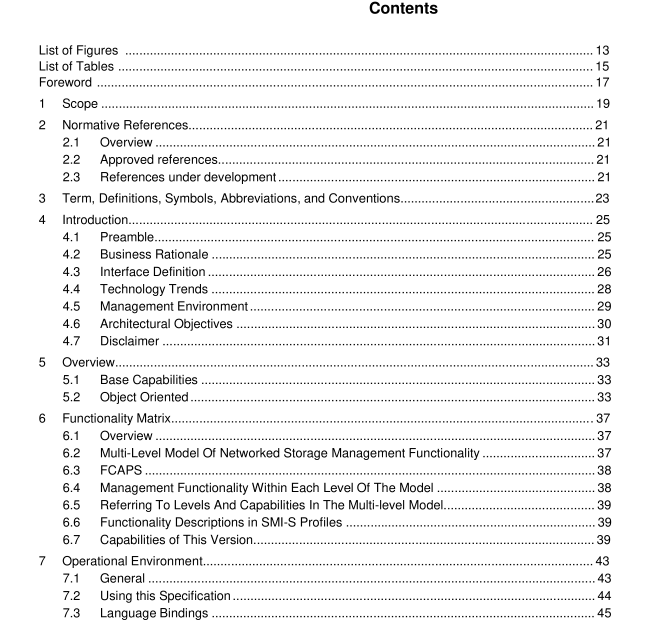ISO IEC 24775-1 pdf – Information technology — Storage management — Part 1: Overview

ISO IEC 24775-1 pdf – Information technology — Storage management — Part 1: Overview
4lntroduction4.1Preamble
Large Storage Systems and Storage Area Networks (SANs) are emerging as a prominent andindependent layer of lT infrastructure in enterprise class and midrange computing environments.Examples of applications and functions driving the emergence of new storage technology include:
. Sharing of vast storage resources between multiple systems via networks,
. LAN free backup,
. Remote, disaster tolerant, on-line mirroring of mission critical data,
Clustering of fault tolerant applications and related systems around a single copy of data.. Archiving requirements for sensitive business information.
. Distributed database and file systems.
To accelerate the emergence of more functional and sophisticated storage systems in the market,theindustry requires a standard management interface that allows different classes of hardware and softwareproducts supplied by multiple vendors to reliably and seamlessly interoperate for the purpose ofmonitoring and controlling resources. The SNIA Storage Management Initiative (SMI) was created todevelop this specification(SMI-Specification or SMI-S), the definition of that interface. This standardprovides for heterogeneous,functionally rich,reliable,and secure monitoring/control of mission criticalglobal resources in complex and potentially broadly-distributed,multi-vendor storage topologies likeSANs.As such,this interface overcomes the deficiencies associated with legacy management systems thatdeter customer uptake of more advanced storage management systems.
4.2Business Rationale
This interface is targeted at creating broad multi-vendor management interoperability and thus increasingcustomer satisfaction. To that end,this specification defines an “open”and extensible interface thatallows subsystems and devices within the global context of a large storage system to be reliably andsecurely managed by overlying presentation frameworks and management systems in the context of therapidly evolving multi-vendor market. In specific,SAN integrators (like end-users,VARs, and SSPs) can, viathis standardized management interface,more flexibly select between multiple vendors when building thehierarchy of software systems required to manage a large storage system independent of theunderlying hardware systems. Additionally,storage integrators can more flexibly select between alternatehardware vendors when constructing storage configurations. Broad adoption of the standards defined andextended in this specification will provide increased customer satisfaction and will:
·More rapidly expand the acceptance of new storage management technology like SANs and iScsi;. Accelerate customer acquisition of new storage management technology;
. Expand the total market.
Additionally, a single common management interface allows SAN vendors and integrators to decrease the timerequired to bring new more functional technology,products,and solutions to market.
4.3 Interface Definition This management interface allows storage management systems to reliably identify, classify, monitor, and control physical and logical resources in a storage system. The fundamental relationship of this interface to storage management software, presentation frameworks, user applications, SAN physical entities (i.e., devices), SAN discovery systems, and SAN logical entities is illustrated in Figure 7: “Interface Functions”.
Figure 7: “Interface Functions” illustrates that functions of the interface can be distributed across multiple devices (i.e., Switches or Array Controllers) and/or software systems (i.e., Discovery Systems). While the functionality of the interface is distributed within or across a storage environment, to insure that monitoring and control operations by clients are consistent and reliable, the state of a given resource is not certain to be valid if it is simultaneously available to clients from multiple unsynchronized sources. EXAMPLE : A request by an SRM application and a backup engine for the bandwidth available on a given Fibre Channel path should be coordinated by a single monitoring entity to insure information consistency. If the SRM application and Backup engine obtain different available bandwidth information for a given Fibre Channel path from multiple unsynchronized sources they could function in conflict and degrade the efficiency of the environment. Addressing this concern is the responsibility of parties configuring Storage and Network management clients that rely on the primitives defined in the specification.









